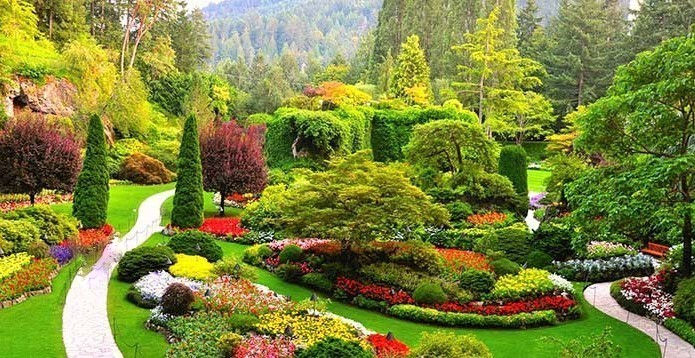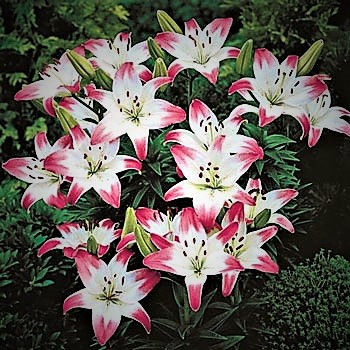Have Plants, Have Plans
- vendiolaads
- Aug 6, 2022
- 7 min read
Updated: Aug 12, 2022
By Sansen Lee Vendiola
Like most good things, great gardens don’t just happen, they’re created and recreated — with some PLANS. Yes, serendipity happens, but don’t just wait for it to make your garden look good, really good.
As I started to garden on my own, in my middle age, I made lots of mistakes. I guess I didn’t really learn much from my grandparents or from my mom, who were good gardeners. But my garden wasn’t an impossible dream at all, since I now have a garden I’m very proud of. It’s mine, and it does look beautiful.
I’ll share in this garden blog my top 3 gardening mistakes. Hopefully, after reading this blog, you can avoid making these three pitfalls.

MISTAKE #1: GARDENING WITHOUT A PLAN. Gardens are products of creativity and hard work, yes. But great gardens require some planning, even a lot of planning, whether on paper or in one’s mind, on a computer or on pieces of scratch paper collected over periods of inspiration or creative mulling or after seeing great gardens.
When I started gardening, I tried a lot of trial and error, not much planning, just hit and miss. Not because I don’t want to plan but more because I planted when the price was right. Translation: when plants are free cast-aways or dirt-cheap at plant stores and big-box nurseries at the end of the plants’ season. I went around looking for “plants on sale,” as when the plants are past the blooming period or their prices have been drastically reduced before they would have been thrown into garbage bins or dumped onto the compost pile by the seller.

I save plants because I want to save. I thought that’s a wise move. In rare cases, I hit a jackpot. But oftentimes, I ended up spending so much time and effort nursing plants to life instead of enjoying them bloom or fruit, and then those recovering plants simply get wiped out by a snap of cold temperature and surely by long droughts.
If I put a money value on my time and effort in saving those “unwanted” plants, I would have raised enough cash to buy the plants I really wanted and were sure to provide me with the satisfaction and joy of having healthy, blooming, or fruiting plants. I guess there’s wisdom in the adage: penny wise, a pound foolish.

At the start of my gardening journey, I was like a wide-eyed boy in a kindergarten art class who painted by numbers, not so much understanding how colors work together and what depth and perspective really meant. I just wanted to paint, and presto! produce something that I thought was beautiful art. At least my painting-by-numbers work was still so much better than my classmates’ smudges of colors that often didn’t stay within the lines on a giant 8 1/2″ x 11″ art paper.
And as a novice gardener, I almost wished there’s gardening-by-numbers. I bought any plant that promised to have a colorful bloom, and plunked that plant into the ground next to another promising plant, but not really thinking about how the foliage and later the blooms would work together. I just wanted a garden with colorful flowers.
Unfortunately, there’s much more to gardening than having colorful flowers.
Well, going back to gardening….so, HAVE A GARDEN PLAN. Put it on paper or on your computer. List down ten things you want in your garden: walkway, planters, potted plants, a gazebo, a pond or fountain, a waterfall, rockeries, a berm, potting and storage shed, trellis, pergola, viewing deck, brick walkway, gazing ball, hanging baskets, window baskets, borders, and islands or flower beds. Then narrow down the list to your top five features.
For plants, look at or research plants that you like — just “like,” not necessarily the “must have” — during each month, especially in the summer months. Then choose five plants for each month. Note especially those plants that you like because they look good over several months.
No matter what else goes into your garden later on over the years, just incorporate those five features, surround them with your top five plants, and you would have created something that you want. But like the kindergarten painter, I’m sure you’ll improve and come up with a very well-laid-out garden as you gather wisdom and years in your gardening. Wisdom comes with age and experience, even in gardening.

Oh, don’t forget to include in your plan the location of your house, your driveway or garage, and walkways. Indicate where the sun shines and sets in relation to your property and the future gardens; where the full sun, part sun, and the shady areas are during the growing season.
If you see someone’s garden that you really love, take pictures of the garden and try to copy it but on a small, more manageable scale. You can, later on, expand your garden. But it’s important to see the small-scale garden come to completion. There’s something rewarding and encouraging about seeing a project completed, no matter how small. Then just add on bit by bit as you desire and as you find more time and resources to expand your starter garden.
MISTAKE #2: NOT WORKING THE SOIL.
In all my haste and frenzy at the start of my gardening adventure, I merely cleared enough area on my lawn, dug holes, and put the plants I have in those dug-up places. To me, a gardening novice, the soil underneath the grass looked healthy and ready for the plants: no big rocks, no sticky muddy slurry, no crumbly and coarse-looking sandy soil, and no gnarled roots.
I thought my soil was rich enough for any plants to survive. Of course, after a while some plants fared well, others sulked, and a few simply petered off to oblivion. I thought those that didn’t do well needed more water, so some were overwatered to their death, like those succulents and cacti with plump leaves. The silver-leaved plants with velvety, hairy leaves also looked like they were sadly rotting.

Then I did some, OK, actually a lot of research. I borrowed from the library many books on gardening, and read each one as if I would be writing a comprehensive exam later. Too bad, there weren’t many online resources at that time when I started gardening — www wasn’t an abbreviation of anything yet.
THE SOIL COMES FIRST, I then quickly learned. I read that not all plants can stand regular watering while certain plants can flourish in moist soils; some plants love acidic soil while others do better in alkaline soil. Luckily, the majority of plants can take soils that are a bit acidic or a tad alkaline, but best when neutral. The soil pH help in the absorption of nutrients by the roots and the overall health of the plants.
Learning from my readings and my mistakes, I conclude that the success of my garden projects often rests on soil preparation first. I bought a soil pH test kit and played chemist with my soils.
Over time, I played it by ear. A soil pH test kit might not be necessary unless your soil has lots of decaying pine needles (which makes the soil acidic), or is bone-dry and rocky (which often signals a soil that’s too alkaline). Soil with a pH between 6.5 to 7.5 is desirable since most plants thrive in this pH range which is not too acidic nor too alkaline.
Whenever I venture into a new project I dig up the soil, to at least a foot deep where I want a new bed or border or flower island. Digging up the soil allows needed oxygen to get into the soil of my garden, and later makes it easier for the roots of my plants to grow and spread faster. Then I add organic matter: bags of potting soil mixed with manure and compost. In the farthest corner of my backyard, I have a little mountain of decaying leaves, grass cuttings, kitchen scraps (no meat though), pulled-up or dead plants (no weeds included), and twigs and branches. I add scraps of black-and-white sections of newspaper and junk mail (without the colored parts/pages) layered in-between the garden waste. I also add bags of cow manure or well-rotted mushroom manure to add some alkalinity and a bit of sand for good drainage. I keep my compost pile wet but not soggy so I don’t drown the helpful earthworms and the microbes that speed up the decomposition process.
I add my compost to the new garden sites, mixing the compost well with the in situ soil. So far, this soil preparation has immensely improved the health and the blooming or fruiting of my plants.

MISTAKE #3: MIXING TOO MANY DIFFERENT PLANTS IN TOO MANY LOCATIONS
When I started gardening, I brought in too many varieties into my garden, planting them in random places without grouping similar plants in specific locations. As a result, I have specific plants blooming everywhere in the garden, spaced out from each other. I didn’t see the desirable effect of a mass planting, and mass of blooms. Instead I seem to have planted a circus of flowering plants, something that other gardeners and writers call “the polka dot” effect.

To use a band or an orchestra as an analogy, a good conductor would not put say five people playing the guitar in five different places far from each other; the four drummers at the four corners; the five flutists in different places, etc. A good conductor would have all the guitarists seated together, the drummers also together, the flutists in another section together, etc. This way, you get a true symphony of sounds, not a cacophony of noise.
The same goes for gardening.
If you have a collection of specific plants, say orchids or cacti or caladium, create a separate niche for that collection. It will highlight and draw attention to the special beauty and uniqueness of such plants, which when mixed with other plants may just be lost amidst the other competing objects of interest in a garden.
Start small even if you dream big. So this way things are manageable and achievable. Start with less variety of plants per blooming season. Instead of having fifty plants of say thirty varieties, aim instead for thirty plants but only five varieties planted together so that when these five varieties flower, their combined blooms create a bigger visual effect and impact.

Repetition is the key, not a chaotic competition or random placement of plants.
Your garden will not have much variety, but that’s all right. I’m sure you can work on variety later. You might want to repeat the plantings of five to create a more unified garden look. The five plants repeated in various areas in your garden will make your garden have an overall complete and cohesive effect. I’m sure you’ll be happy with the result.
These were my top three gardening boo-boos. I’m sure I made more gardening blunders, but I’m also sure I made even more improvements to my garden by learning from my mistakes. And many of my favorite parts of my garden also came about from serendipity, for while a good plan ensures a successful garden, creativity does go into play in gardening. Gardening is both a science and an art.

Comments